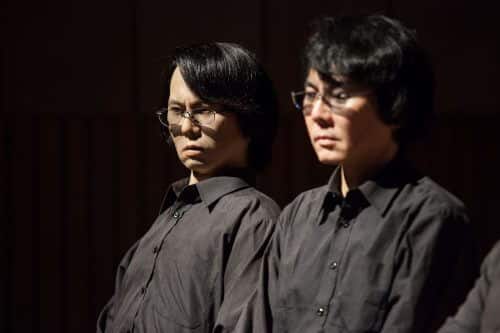Why after so many years are robots still very far from confusing other people into thinking they are human, and not passing the Turing test? * To Prof. Hiroshi Ishiguro - the human and the robot - from the Laboratory for Advanced Robotics - the solutions

For over 10 years there have been two identical professors named Hiroshi Ishiguro at Osaka University. One of them is flesh and blood, and the other is a robot. On the day Prof. Ishiguro gave his lecture on behalf of the Japanese Embassy at the Mindspace offices in Tel Aviv, the robot made its way to Monaco.
The humanoid robot (an android in the original meaning of the word) is split into two suitcases, with its head - a replica of Ishiguro's head - taken by the technician who accompanies it in a hand bag inside the plane. "If you want to invite me personally, you have to pay for a flight in business class. A technician who flies in tourist class can be attached to the robot and he himself, as mentioned, usually flies in the luggage compartment."
Besides the economic advantage, a performance of the robot becomes a show, when the robot takes off its clothes and reveals the iron and fibers that fill it, "which I cannot do for myself in my real body".
Ishiguro usually operates his double robot from a control center at Osaka University, but sometimes he lets the robot speak on its own, of course after programming and starting to use artificial intelligence.
You have to decide if it is a human or a robot
In response to a question from people and computers how after so many years the robots he develops are still very far from confusing other people into thinking they are humans, and do not pass the Turing test, the professor said that "the original Turing test talks about text - you correspond with a computer and don't know if it is computer or another person on the other side. Here we are talking about the generalized Turing test - you see a creature that looks like a person and you have to decide if it is a person or a robot."
"The robots will still fall short, whether in the way they walk, in the limitations of facial expressions, and also in the relatively limited content of their words. But there are enough fields in which we can use robots even if they are not really human."
In the presentation Prof. Ishiguro showed many examples of the use of robots, both human-like and non-human. Among other things, small robots that take care of autistic people who refuse any contact with humans, and huggable pillows that loosely resemble a person without any gender identity, that elderly people with dementia talk to, which is more convenient for them than talking to humans.
The professor also explains that "robots that will explain to people how to get from place to place will be essential in three years when Tokyo hosts the Olympic Games. Not only is it a city that is difficult for foreigners to find their way around, very few of the residents know English. Robots that can be freely chatted with in English will allow tourists to find their way.
Why did the development of service robots develop specifically in Japan?
"There are several reasons for this. The first reason is that we are facing demographic forces that have forced us to go in this direction. Fundamentally we do not distinguish between humans and humanity, therefore we cannot accept something inhuman like a robot, but we must develop the field. And of course, the Japanese anime films do not present the robot as an enemy but as a friend, unlike Hollywood films, and we are not afraid that they will destroy humanity."
All over the world, Ishiguro said, "and Japan showed it earlier, there is a problem of population aging. We don't have enough young people to take care of them, for example in preventing falls. They can help them go to bed or to the bathroom. First of all, the elderly need a friend to talk to, and we are developing robots that do this."
"I am personally working on a robot that will walk around the restaurant and take all the dishes on the table. A robot that takes orders already exists. And of course there is a need for robots to help people find their way around public places. There are many applications that can be transferred to robots."
"These developments will improve the quality of our lives," explains Prof. Ishiguro. "There will always be a need for people to help develop the technologies. We will simply increase their productivity."
Prof. Ishiguro took advantage of the two days he was in Israel to visit the robotics lab at Ben Gurion University, where a robotic receptionist from his lab in Japan was stationed 10 years ago and where the field is being researched in collaboration with his lab in Osaka.
In addition to the basic research work at Osaka University, Prof. Ishiguro established a robotics laboratory in 2002 at the ATR - Advance Telecommunication Research Institute International. The representative of the Mossad also invited Israeli researchers in the fields in which the center deals to come and research it. About a third of its 500 researchers are foreigners.
See more on the subject on the science website:
